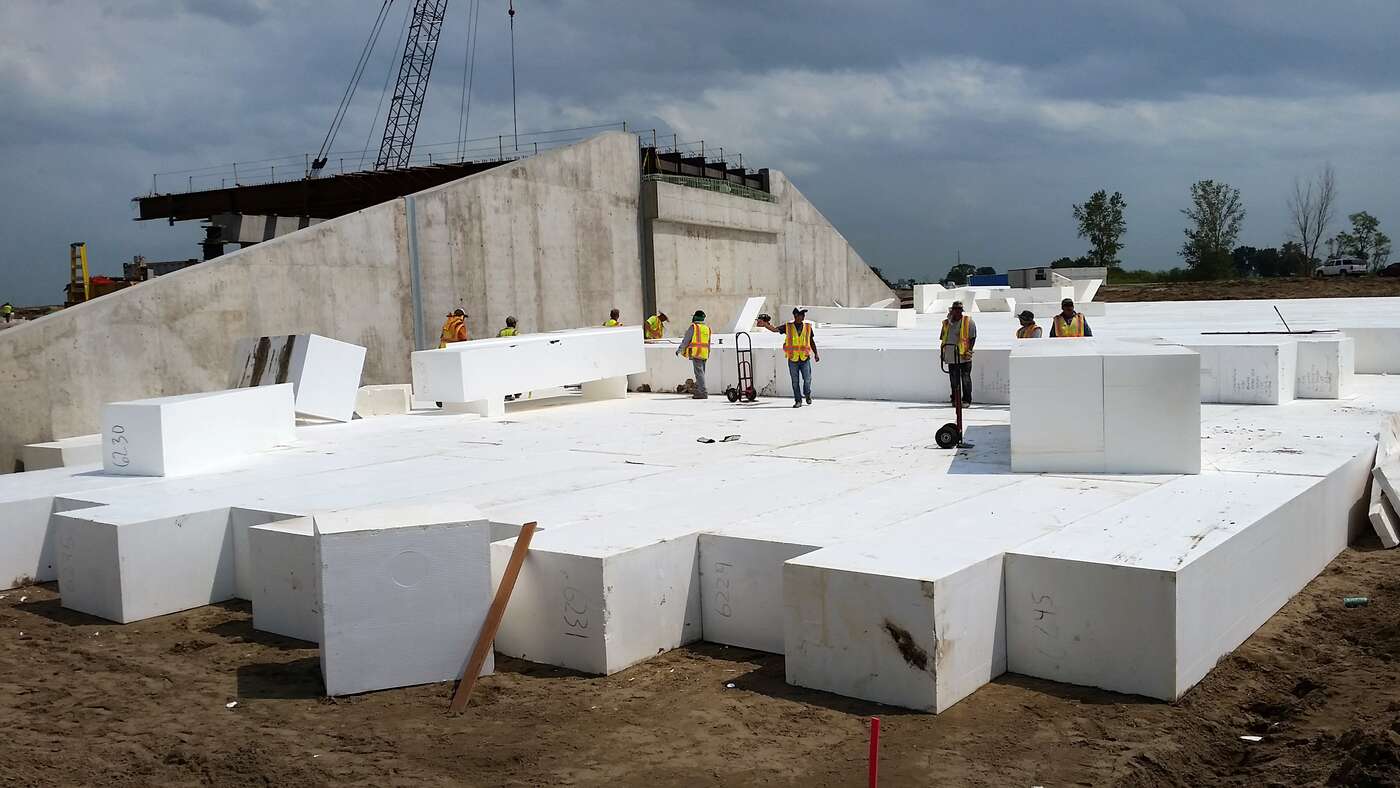When building roads and bridges, engineers face a constant challenge: how to create stable and long lasting structures without overloading weak soils or overburdening a budget. That’s where EPS Geofoam comes in. It’s a lightweight yet strong material that’s transforming infrastructure projects across the country.
At Benchmark Foam, we manufacture high-quality expanded polystyrene (EPS) Geofoam, a game-changing solution for geotechnical challenges. Unlike traditional fill materials like soil or gravel, Geofoam weighs 50 to 100 times less, drastically reducing pressure on underlying soils while maintaining structural integrity.
How Geofoam Improves Stability in Transportation Projects
1. Reduces Pressure on Weak Soils
One of the biggest headaches in construction is dealing with soft, compressible or unstable soils. Heavy fill materials can cause uneven settling, leading to cracks, potholes, and even structural failure over time.
Geofoam solves this problem by distributing the load more evenly without adding excessive weight. A single cubic yard of soil can weigh up to 3,000 lbs, while the same volume of Geofoam may weigh as little as 30 lbs. This dramatic weight difference means less stress on the ground below.
2. Speeds Up Construction (Without Sacrificing Strength)
Time is money in infrastructure projects. Traditional fill requires compaction, settling time, and multiple layers, dragging out schedules.
Geofoam blocks are pre-cut, lightweight, and easy to install, often reducing construction time by weeks or even months. Despite being light, they provide excellent load-bearing capacity, supporting heavy traffic and structures without sinking.
3. Minimizes Lateral Pressure on Retaining Walls & Bridge Abutments
Retaining walls and bridge abutments bear enormous pressure from backfill materials. Traditional dirt and gravel push outward, increasing the risk of wall bulging or failure.
Because Geofoam is so light, it cuts lateral pressure by up to 90%, helping walls stay straight and secure. This makes it ideal for bridge approaches, highway embankments, and other areas where stability is non-negotiable.
4. Prevents Frost Heave & Insulates Roads
In colder climates, frost heave (where freezing water expands and lifts pavement) can damage roads and bridges. The thermal resistance of EPS Geofoam acts as an insulating layer and can ultimately extend pavement life with improved performance.
Real-World Applications: Where Geofoam Shines
Highway & Road Construction
- Reduces embankment settlement on soft ground
- Insulates against frost damage in cold climates
- Speeds up projects with rapid installation
Bridge Approaches & Retaining Walls
- Slows lateral pressure that causes wall failure
- Prevents uneven settling where roads meet bridges
- Lightweight alternative to heavy concrete fills
Underground & Tunnel Projects
- Relieves stress on tunnel roofs
- Prevents soil collapse in unstable conditions
- Easy to shape for custom void filling
The Future of Infrastructure is Lightweight
With rising demands for faster, cheaper, and more durable infrastructure, Geofoam is becoming a staple in modern construction. Its ability to solve soil problems and speed up timelines makes it a smart pick for engineers and contractors alike.
At Benchmark Foam, we supply high-quality Geofoam that meets ASTM D6817 standards, providing reliability in every block. Whether you’re working on a highway, bridge or underground project, Geofoam delivers strength without the weight.

